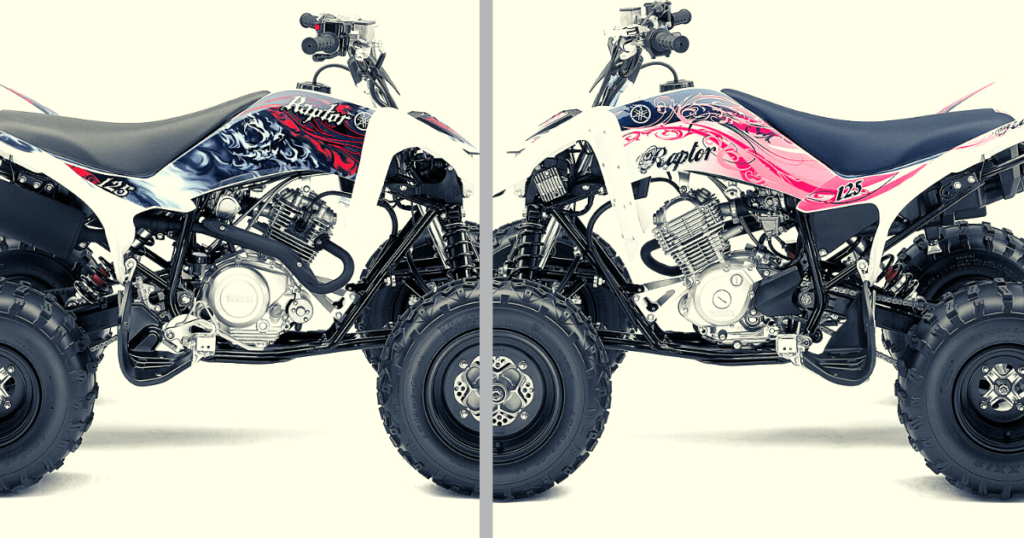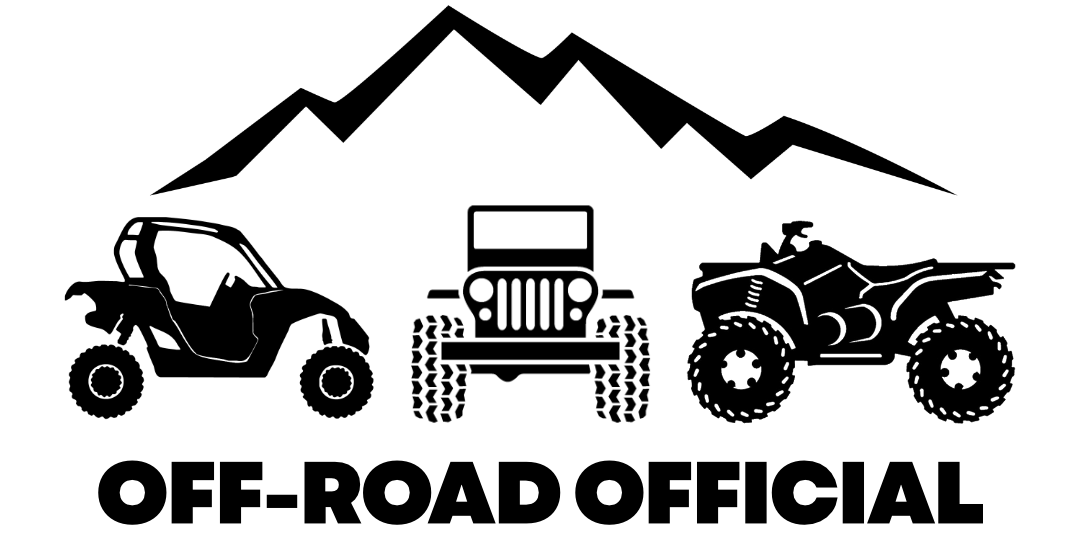The Yamaha Raptor 125 was an entry-level youth ATV produced by Yamaha from 2011 to 2013. Its design was inspired by a combination of the Raptor 250 and YFZ models which rolled into one sporty looking package.
Though technically a youth ATV geared towards riders ages 16 and up, its build is just a bit smaller than that of a full-size sport quad and its performance is not far off from the models it was designed after.
The Raptor 125 was created to fill the gap that existed for youth who were ready to make the transition from a true youth ATV to a bigger model, but weren’t quite ready for a full-size quad just yet. While it served this purpose well, it was likely discontinued after only three years because consumers may not have seen the value in paying up for a transitional ATV that the rider may outgrow in just a few short years, preventing its popularity from ever taking off.
This guide will serve to help inform current owners and potential future owners by detailing the pros and cons, top speed, specs, and key features of this model.
Table of Contents
I. Specs & Features
– Engine
– Drivetrain
– Tires & Brakes
– Suspension
– Dimensions
II. Exterior
III. Handling
IV. Top Speed
V. Price
VI. Pros & Cons
VII. Conclusion
Specs & Features
Engine
The Yamaha Raptor 125 is powered by an air-cooled 124 cc engine. For a smaller engine, it has deceivingly good power output and acceleration, easily motoring around youth and having no problem with adults weighing 200 lbs or less in most terrains. And for a youth model, it has plenty of speed to give both kids and adults a thrill.
The throttle response is excellent, with light throttle pull needed to propel the machine forward. It also runs smooth and is fitted with a single-axis counterbalancer to reduce vibration throughout the machine. As you’d expect from a smaller engine, the noise output is not an issue.
| Engine Type | Four-Stroke SOHC, gas |
| Cylinder Arrangement | Single Cylinder, Forward-inclined |
| Displacement | 124 cc |
| Bore x Stroke Ratio | 54 x 55 mm |
| Compression Ratio | 10.0:1 |
| Carburetion System | Carburetor, Mikuni 29 mm |
| Engine Cooling | Air-Cooled |
| Fuel Capacity | 2.4 Gallons |
| Starter Type | Electric |
| Ignition System | DC-CDI |
| Battery | 12V 6Ah |
| Spark Plug | NGK/CR6HSA |
| Engine Oil | JASO Standard MA – SAE 5W-30, 10W-30, 10W-40, 15W-40, 20W- 40 or 20W-50 |
Drivetrain
Like many youth and sport ATVs, the Raptor 125 only offers two-wheel drive and is chain-driven, with an O-Ring chain transferring power to the rear wheels. Riders can shift to five different gears using the manual clutch, offering the flexibility to ride in many different terrains as riders gain experience. The quad can also be started in any of these five gears.
| Drive System | Chain Drive, Sealed O-Ring Chain, 2WD |
| Transmission Type | Manual |
| Gears | 5-Speed, wet multiplate clutch |
| Gear Shift Pattern | 1 – N – 2 – 3 – 4 – 5 |
Tires & Brakes
19-inch Maxxis All Terrain tires in the front and 18 inch Maxxis All Terrain tires in the rear provide plenty of traction in most terrains and increase the handling ability of the quad.
Hydraulic disc brakes in the front and rear ensure it has consistent stopping power in all conditions and terrains. The front brakes are controlled by a hand lever on the right handlebar and the rear brakes by a foot pedal in the right footwell. There is also a parking brake for convenience when stopped.
| Front Tires | 19 x 6-10, Maxxis AT / M957Y |
| Rear Tires | 18 x 9-8, Maxxis AT / M940 |
| Recommended Tire Pressure | Front – 3.6 psiRear – 4.4 psi |
| Wheels | Aluminum |
| Front Brake Type | Dual Hydraulic Disc |
| Rear Brake Type | Hydraulic Disc |
Suspension
The Raptor 125 is configured with a double wishbone suspension with preload adjustable shocks in front and a swing arm suspension in the rear, so it rides and handles the same way a full-size sport ATV does. This enables the quad to be suitable for adults and youth.
The suspension system offers 7.5 inches of travel in the front and 7.9 inches in the rear, and the shocks do a good job of soaking up bumps and softening the landing when jumping.
While riders do need to be wary of the obstacles they take on with only 3.3 inches of ground clearance, most easy and medium-difficulty trails and terrain should bring no worries when it comes to bottoming out.
| Wheelbase | 43.7 inches |
| Ground Clearance | 3.3 inches |
| Front Suspension | Independent Double-A Wishbone w/ five-way preload adjustable shocks |
| Rear Suspension | Swing Arm |
Dimensions
While the Raptor 125 is technically a youth ATV, it’s not that much smaller in size than the rest of its Raptor brethren. Riders of between 4 and 5.5 feet in height will find it most suitable, but taller adults can still make it work without sacrificing much comfort.
At a weight of around 300 lbs, the Raptor feels incredibly light and nimble to drive. And its compact size makes it perfect for quickly navigating tight turns, trails, and wooded areas.
| Length | 63.4 inches |
| Width | 40.1 inches |
| Height | 39.8 inches |
| Seat Height | 28.1 inches |
| Curb Weight | 300 lbs. |
Exterior
The Raptor 125 looks every part of a sport ATV, with sleek body lines and modern plastics. The quad’s design mimics that of both the Raptor 250 and YFZ models, but with its own unique styling.
The main color options were blue and white, with the option for adding two different graphics kits to the white option, including a gray/red skull and flames pattern or a pink tribal pattern.

Up front, a single 30-watt halogen headlight gives the Raptor an aggressive look.
The chassis of the Raptor 125 is similar to that of the Raptor 250, but with the handlebars lower and moved back just a tad to offer a more comfortable riding position to smaller riders. The front brake lever and thumb throttle are located on the right handle, with the start button, kill button, and light switch located on the left handle.
The seat has been downsized just a bit, but is still plenty comfortable to fit most body sizes. Below it are half-footwells, with the foot-operated rear brake lever located in the one on the right side. A grab bar and rear tail light round out the rear of the ATV.
Handling
While the Raptor 125 is not much smaller than the rest of the full-size Yamaha sport ATVs, you can definitely tell that it is 30 lbs lighter when driving it. It just feels more nimble than even the sportiest full-size quads, starting with its incredibly light steering.
This quad corners well, and riders can kick the back end loose for power sliding around corners pretty effortlessly. Even so, the tires and suspension offer good stability when turning. And it makes for a solid jumper, with riders able to catch some air pretty easily and maintain control throughout.
And while you’ll want to be cautious of obstacles when trail riding, a slight pull on the handlebars accompanied by a little gas will enable a low wheelie over small logs and puddles. And the Raptor 125 has no problem keeping up with the full-size quads on the trail, as it is not far off from one itself.
Yamaha Raptor 125 Top Speed
The Yamaha Raptor 125 top speed is between 45 to 48 mph, depending on the degree of wear on the engine in the years since production.
While it doesn’t have the top end speed that many full-size sport quads have, it still moves fast enough that it won’t be left in the dust when trail riding with them. And it can go pretty much anywhere the full-sizers can go.
Increasing Top Speed
Some owners may want more than a top speed of 45 to 48 mph in their Raptor 125. Others may have trouble reaching that range. For those owners, there are some ways to increase the speed of your quad.
Upgrade The Intake System. The intake system consists of the airbox and air filter. It allows clean air into the engine and determines how much fuel the engine can be fed, which both affect the amount of power produced.
By upgrading the airbox and air filter, you’ll enable more airflow into the engine while also ensuring the air is clean so it runs better. The more air in and out, the more power your ATV engine will generate. Which is where upgrading the exhaust system helps as well.
Upgrade The Exhaust System. Upgrading the exhaust system helps provide a more efficient escape for this added airflow once used up. An upgraded exhaust system focuses on increasing the horsepower and torque of the Raptor, with riders ideally experiencing the feeling of a higher amount of torque from all four corners of the machine along with an overall increase in power throughout all gears.
Upgrade to larger-diameter tires. Replacing the stock 19-inch and 18-inch tires with bigger aftermarket tires should have your quad reaching a little faster top-end speed.
Ensure the tires are fully inflated as underinflation leads to less speed. Per the owner’s manual, the recommended tire pressure is 3.6 psi in the stock front tires and 4.4 psi in the stock rear tires.
Use a high octane gas in your Raptor, preferably 91 or 93 octane. A higher octane gas will result in higher engine performance and speed in these models. You should be able to tell the difference in your quad’s performance with high vs. low octane fuel.
Check the spark plug. If the spark plug is worn or fouled, it may not be igniting fuel in the engine at the proper rate which can result in a lower top speed. If necessary, replace it with a high performance iridium spark plug.
Yamaha Raptor 125 Price
How much does a Yamaha Raptor 125 cost? The table below shows the original list prices and average present-day retail values of each Raptor 150 model by year, according to NadaGuides.
| Year, Make & Model | LIst Price | Average Retail Price |
| 2011 Yamaha Raptor 125 | $3,399 | $1,940 |
| 2012 Yamaha Raptor 125 | $3,399 | $2,125 |
| 2013 Yamaha Raptor 125 | $3.499 | $2,440 |
While there are only a handful of used models available for sale online, the majority do fall within the price ranges listed above.
Pros & Cons
The following are the most notable pros and cons highlighted among owners of the Raptor 150.
Pros
- Electric Starter works in any gear
- Power to weight ratio of the quad is impressive
- Excellent throttle response
- Despite being designed for youth, the chassis setup and overall dimensions of the quad make it capable of accommodating riders of various sizes
- The existence of a chain adjuster makes chain adjustments and maintenance easy-to-do and hassle free.
- Enough acceleration and speed to keep up with full-size quads on the trail
Cons
- Brake lever is extended enough that it can be a little tough to reach for folks with shorter fingers
- Power and speed a little lacking on flat, firm terrain
- No Reverse setting
- Chain has a tendency to pop off in some machines if the rear shock or swingarm components become compromised.
- Small gas tank means frequent refueling
- Carburetor known to cause cold starting issues
Conclusion
Made to be a transitional youth ATV, the Yamaha Raptor 125 was big enough and quality enough to appeal to more than just the teenage riders it was designed with in mind. In terms of performance, comfort and handling, it trumped all competition in its class at the time. And one could argue that used models still very well may have the upper hand on the competition in the present day.


